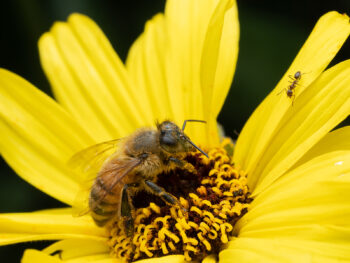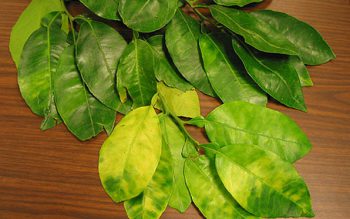They bloom in beautiful, vibrant colors. But they’re also ruthless killers, capable of wiping out almost anything growing in their paths.
The County’s Agriculture, Weights & Measures (AWM) Department goes after these invasive non-native plants in an attempt to protect local agriculture, animals and other plants from their destruction. Some even pose a fire danger.
Among the County’s biggest targets is the yellow starthistle, one of five non-native plants on the region’s most wanted weed list. The yellow flowering plant poses a “huge issue” around the state, said Bill Winans, a senior agricultural standards inspector with AWM’s Integrated Pest Control. It has infested 12 million acres of California land, forcing millions of dollars of cleanup and eradication work, according to AWM officials. Using a $13,123 grant from the California Department of Food and Agriculture, AWM spent the past two years eradicating the plant across the region. Employees removed more than 30 acres of it.
With state funding dwindling, many counties have stopped doing this kind of eradication work, said Marco Mares, Deputy Agricultural Commissioner/Sealer with AWM.
The state eliminated its terrestrial weed program last year, and the County is “constantly looking for funds to continue this work,” Mares said.
The San Diego Weed Management Area, a local group of agencies, organizations and individuals, has teamed up to fight these non-native weeds. The County of San Diego is the group’s lead agency, which focuses on a handful of species that are emerging and therefore still could be controlled.
What’s the harm in these plants anyway?
The yellow starthistle may have pretty blooms, but it is also spiky weed that can grow up to six feet tall. Its spines can stretch up to an inch long and its toxins are strong enough to kill horses.
“If you try to walk through an infestation, they poke right through your pants,” said Winans. “People just don’t like it and they worry about horses feeding on it.”
Infestations interfere with grazing and de-value land.
To combat this, AWM’s Integrated Pest Control division responds to public sightings of the plants on both private and public property. Winans and other employees then follow up on the reports, surveying the plants and either eradicating them on the spot or coming up with a plan to do so. Winans might write a recommendation to use an herbicide, a chemical that kills plants or inhibits their normal growth. Or his division may remove the plants by hand, with a shovel, a weed eater or a mower. Goats have even been used.
| Some are fairly adaptable and spread kind of like a slow motion wildfire |
| -Bill Winans, agriculture standards inspector |
The latest addition to the weed target list is the Canary Island knapweed, discovered in San Diego County last year. A botanist with the Anza-Borrego Desert State Park spotted the rare plant in the Borrego Springs area, marking the first time it had been found in the United States, Winans said. So far, it has only appeared in three or four sites and the County has treated each location. The plant is not native and can threaten native plant species and impair the rich natural diversity of flora and fauna in the area.
It’s tough to say exactly how a plant like this got here from the Canary Islands, the Spanish archipelago off the northwestern coast of Africa. Some non-native plants that appear in the County arrive as “ornamentals,” Winans said. Some get here by accident.
“Some are fairly adaptable and spread kind of like a slow motion wildfire,” he said.
Also on the County’s target list are the funky named perennial pepperweed, purple loosestrife and spotted knapweed.
Among the toughest to control is the pepperweed, which grows in wetlands and can survive repeated treatments of herbicides. With its small, dense clusters of white flowers, the plant “basically smothers everything; nothing can survive around it,” Winans said. It was discovered in San Diego County in 1999. When it takes over the plant habitat in an area, the types of creatures living in an area often change too, Winans said. It can also pose a fire danger.
One of the County’s biggest concerns right now is a 400-acre patch of the pepperweed east of Lake Hodges in the San Dieguito River Park. AWM is using a grant from the state’s Department of Food and Agriculture to remove the plant before it spreads further.
Another leafy offender is the purple loosestrife, a magenta or purple-colored stalked plant that also grows in water. Like the others, it too pushes aside other plants. Discovered in the County a decade ago, the loosestrife has most affected the Escondido Creek, Rancho Santa Fe and Encinitas areas.
The spotted knapweed is also known for its aggressive tendencies. Amazingly, the seeds for this purple or pink flowered plant can lie dormant for 15 years. It’s not new in the area and the County has had success getting rid of it. Winans said four of the five known spots are believed to have been eradicated.
“There’s only one known (infestation) right now on Palomar Mountain,” he said.
AWM officials said they will continue to target these destructive visitors as long as they can find funding to pay for it. Right now, funding sources include the San Diego Association of Governments (SANDAG) and the United States Department of Agriculture.
For more information about the County’s efforts to eradicate invasive weeds or to report an infestation, visit AWM’s Weed Management Area web page.




